Warning! Can Dogs Eat Gum? Deadly Treat & Hidden Dangers!
Gum is one of the favorite chewing snacks for humans. Have you ever wondered, “Can dogs eat gum?
No is the answer. Gum can be dangerous for dogs, especially if it contains xylitol, a common sugar substitute.
This article will discuss why gum is toxic to them, what to do if a dog chokes on chewing gum, and prevention tips.
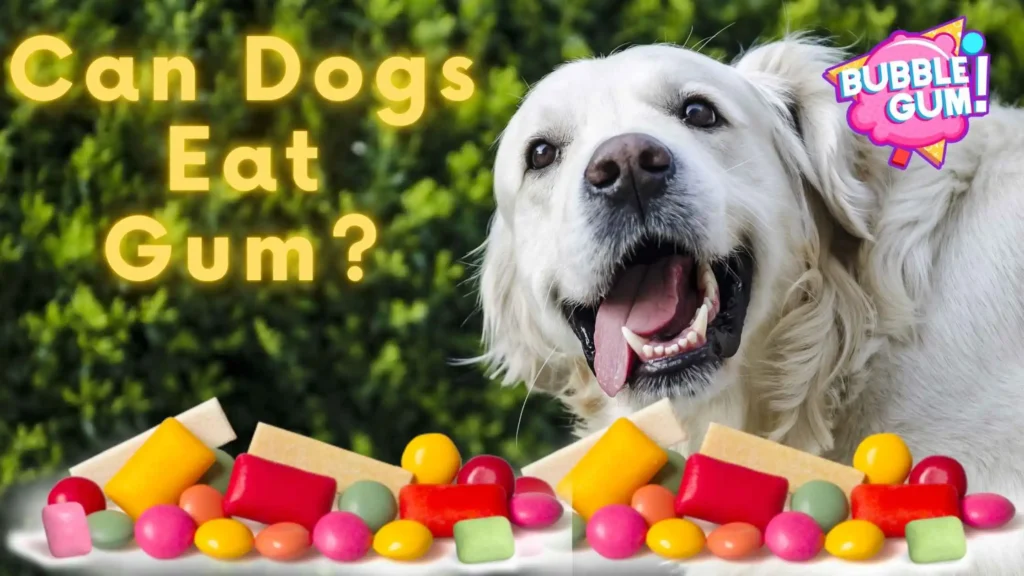
The Dangers of Dogs Eating Gum
What might be a tasty chew to humans is a potential death sentence to the dogs, and this is what today’s joke shows. Can dogs eat gum is the question. The main risk is posed by xylitol, a no-sugar gum, and other chewing gums that are manufactured from it.
Toxicity of xylitol in dogs is quite dangerous and dogs can develop hypoglycemia, liver failure, and even die, and this is even for relatively small intake of the substance. Other than xylitol, gum could be a choking hazard or cause an intestinal blockage, which makes gum a two-in-one danger to your pet.
What is Xylitol?

It can be easily identified with the new name ‘sugar substitute’ and is widely used in chewing gums, and mints, preferably in candies and even butter spreads that have no sugars added to them.
That is because it has a sweet taste like sugar but with fewer calories which makes it ideal to be used in diet and dental products. However, for humans, xylitol is safe while dogs’ insulin levels increase, which results in dangerously low blood glucose levels.
Why is Gum Dangerous for Dogs to Eat?
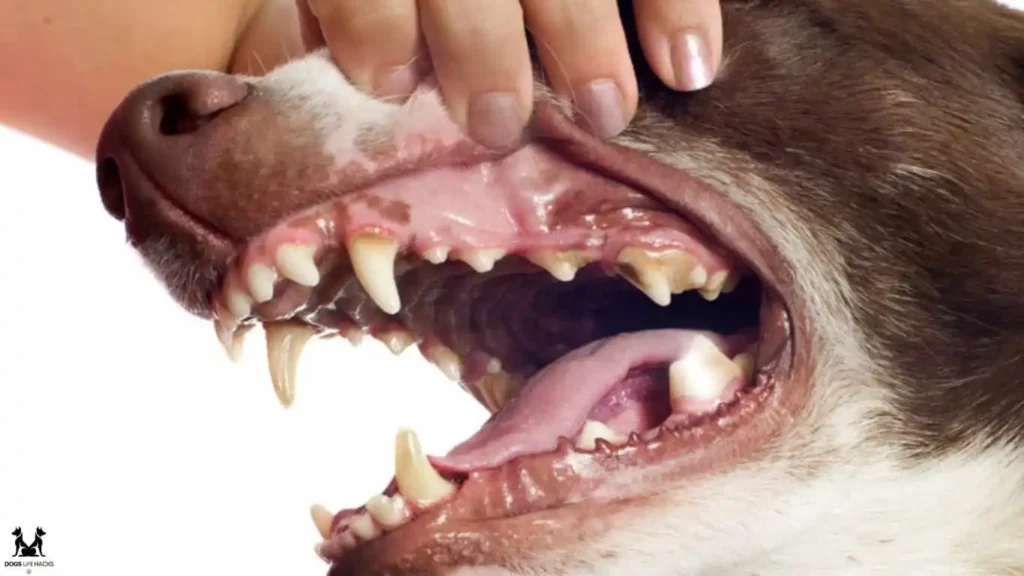
Xylitol which is an ingredient in chewing gum that why the question of can dogs eat gum always arises when ingested by a dog causing the pancreas in the animal’s body to release insulin thinking that it has consumed sugar. This results in their low blood sugar levels and this can manifest in weakness, seizures, and even coma.
Other than xylitol, the physical characteristics of gum can lead to the product becoming lodged in the dog’s throat or its intestinal tract causing choking or surgeries.
How Much Xylitol Would My Dog Need to Eat to Get Sick?
Harmful intake of xylitol varies with your dog’s size and the quantity that they consume. For example, it is enough to have from 0. For first-time consumers, it can cause hypoglycemia in amounts of 1 gram of xylitol per kilogram of the body weight while high doses of 0. The fatalities of excessive doses result from liver failure and may be caused by 5 grams of the substance per kilogram of body weight.
Taking into consideration the fact that as little as one piece of gum can contain from 0. It is much better to avoid products containing xylitol in the first place because even a small amount – one to one gram of xylitol – can be dangerous to your dogs.
Symptoms of Xylitol Toxicity in Dogs
Knowing the signs of poisoned dogs due to xylitol helps ensure that your dog gets the help they require. Symptoms are usually seen within thirty minutes of taking the substance, although they can occur within 6 to twelve hours.
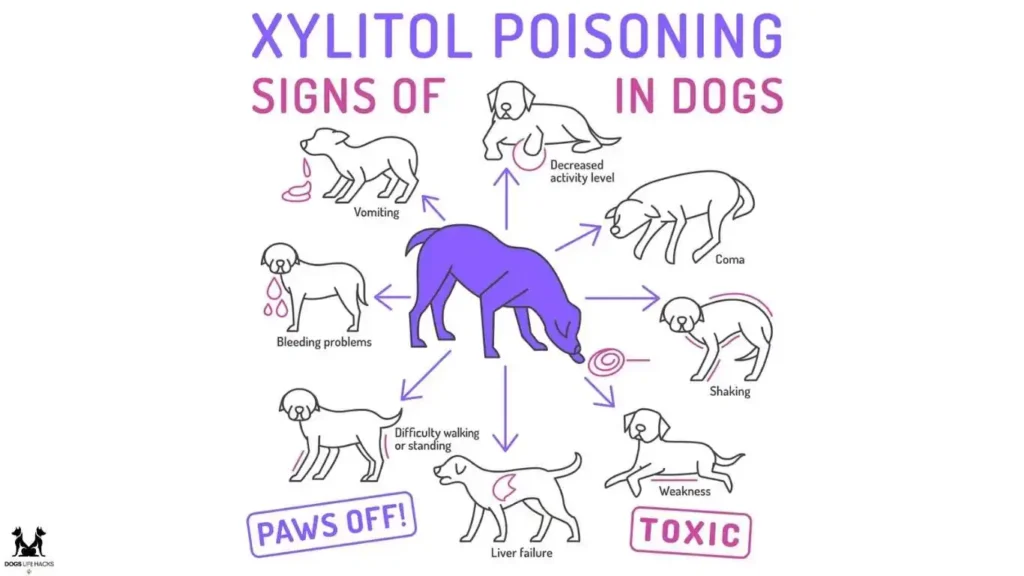
Some of the symptoms associated with the disease are vomiting, lack of coordination, lethargy, seizures, and in advanced stages, liver disorders. If you first detected any of these signs and you strongly believe that your dog got exposed to xylitol, do promptly consult your veterinarian.
What Happens If a Dog Eats Gum Containing Xylitol?
Xylitol is toxic to dogs, and if your dog swallows gum containing xylitol, they’re likely to develop hypoglycemia, which can be fatal. Similarly, if the patients take too much xylitol, it will affect the liver or even lead to liver failure which might not have any early signs.
This requires that you take your dog to the vet so that appropriate treatments can be commenced to restore the blood glucose concentrations.
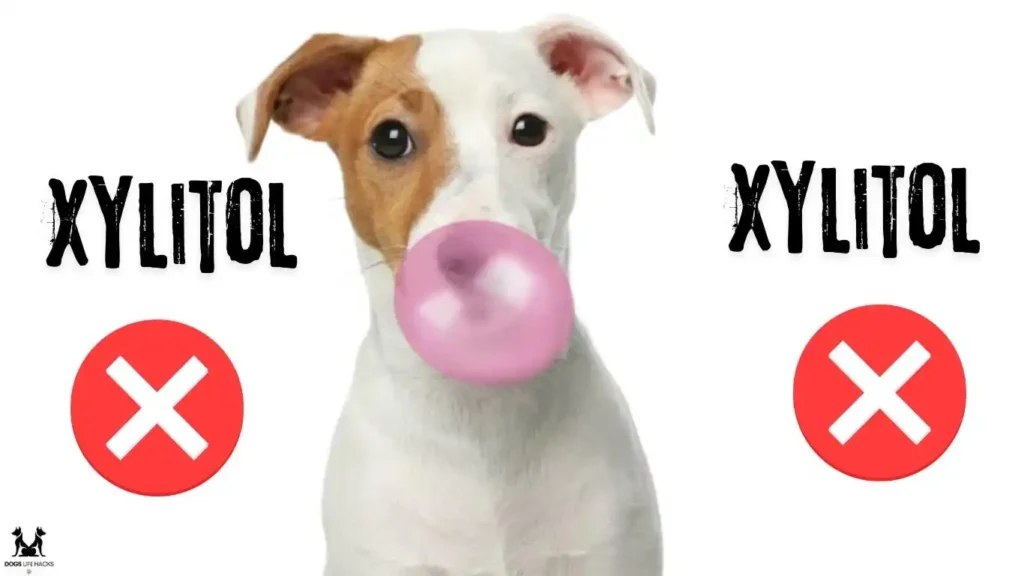
What to Do If Your Dog Ate Gum Containing Xylitol
Well, what should you do if your dog God forbid gets their paws on gum that contains xylitol?
Here’s a step-by-step guide:
- Stay Calm: Your first impulse may be to freak out but it’s essential to maintain your composure because acting fast is important.
- Call Your Vet: You should contact your vet or an emergency animal hospital straight away. They are best placed to advise on what the next course of action depending on the size of the dog and the amount of gum consumed.
- Induce Vomiting (Only If Advised): Your vet can advise on whether it is proper to make your dog vomit to remove the gum from your dog’s system. Never engage in it without asking for help from a professional as it can be more of a disadvantage most of the time.
- Monitor Your Dog: Monitor your dog for any signs of xylitol toxicity including but not limited to shaking, weakness, and or seizures.
How Will the Vet Treat My Dog for Xylitol Poisoning?
Common treatment options for xylitol poisoning include managing the fluctuations in your bottle’s sugar level through intravenous fluids, giving them glucose, and at times treating the liver with specific drugs.
In some extreme conditions, the pet will require hospitalization and may need to spend some one to two days with the vet receiving intensive care. The golden rule is not to waste time if you ever think that your dog has ingested xylitol.
What Other Things Contain Xylitol?
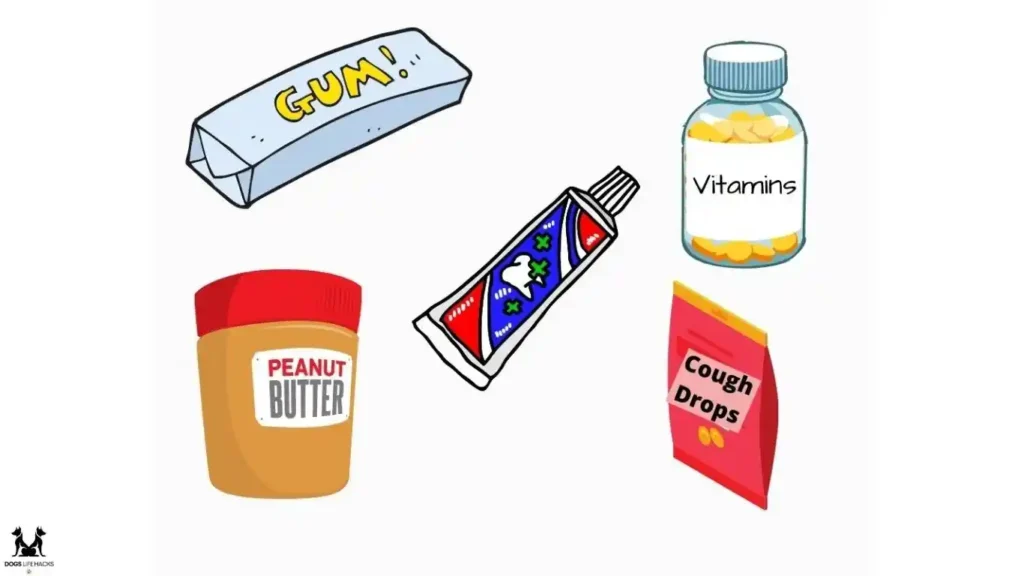
Xylitol is not exclusive to gum and also is present in a lot of items that are used in our daily lives including toothpaste, mouthwash, baked products, and some medicines. Some products are considered toxic to dogs so they should be bought with ingredient labels checked and kept at places that your dog cannot access.
Are There Any Other Substances That Contain Xylitol?

Apart from the common sources such as gum and mints, xylitol may be hidden in a few other places as well. ” Branded peanut butter, jelly, sugar-free products such as desserts, and some over-the-counter medicines can contain xylitol.
Some dogs are sensitive to certain ingredients and therefore it is always recommended to read the labels if in any doubt.
What If the Gum That My Dog Ate Doesn’t Contain Xylitol?
If your dog consumed gum that does not contain xylitol, it may not be as severe as just mentioned but it is not safe either. This is true although regular gum may not contain xylitol, it is also associated with complications such as gastrointestinal blockage. You should consult your vet if your dog chews a lot of gum or if he seems uncomfortable in any way.
Is It Still an Emergency If My Dog Ate Gum That Doesn’t Contain Xylitol?
Regardless of the absence of xylitol in the gum Can Dogs Eat Gum?, it can be an emergency at any given time. The danger of Choking or intestinal obstruction is very much a possibility and much more so in small dogs. It is therefore very important to watch for any signs of dog discomfort such as vomiting, little or no appetite, or having pain in the abdomen and consult a vet.
What to Watch for in the First 30 to 60 Minutes
The best thing to do is to try to remove the gum from your dog’s mouth within the first hour after the gum is ingested.
If the gum consumed is sugar-free watch for symptoms of xylitol poisoning and if it contains regular sugar be on the lookout for signs of choking or blockage. They can progress rapidly, and being prepared to act, and having your vet’s number on speed dial might just save your dog’s life.
Final Thoughts on Can Dogs Eat Gum
Xylitol, dogs, and gum: a toxic mix The combination of gum and dogs is often a bad one simply due to the dangers of dogs eating gum and having it stick to their fur, but the addition of xylitol makes it worse.
Even though perhaps you can give some of these sweet treats to your pet, the dangers always overshoot the benefits no matter how appealing they seem in the moment. It is advisable always to lock gum and other products containing xylitol away and if your pet has access to such products then you should seek the services of a veterinarian.
Frequently Asked Questions
What happens if my dog eats gum?
Gum is very indigestible and thus if ingested it will have to pass through the system of your dog. This gum, if a lot of it has been swallowed, can create a barrier in a dog’s intestines and the regular food will not pass through. This is so because if your dog also ingests the gum’s wrapper or packaging they would have swallowed packaging material.
What gum is toxic to dogs?
Xylitol is lethal to dogs and ingesting one stick of gum sweetened with it can easily kill a small dog. In general, to develop poisoning in dogs, they have to be given approximately 0 grams of xylitol. Seriously, it means that maximum consumption should not exceed 5 grams per one pound of body weight. The amount of sugar in chewing gum averages around 0. 22-1. That is right, you did not get even 0 grams of xylitol per piece!
Can dogs lick chewing gum?
It is demonstrated that xylitol content can greatly differ in the products but it is fatal doses that cause harm. Just one chewing gum containing sufficient amounts of xylol and dependent on the size of the dog is poisonous enough to cause the dog to become critically ill.
Can dogs eat Hubba Bubba gum?
In most cases, bubble gum does not become an issue in a dog’s life. It will most likely do so as it gets to his stomach and he should expel it though. Symptoms that suggest that a problem is present include vomiting, restlessness, loss of appetite, and or abdominal pain.
How quickly does xylitol affect dogs?
First signs of xylitol toxicosis may not be easy to recognize and may take 8 to 12 hours at times. But in most cases, within half an hour of consuming a product with xylitol, most dogs will manifest some of the foregoing symptoms. Signs depend on the amount ingested and include Vomiting.
Related Articles
